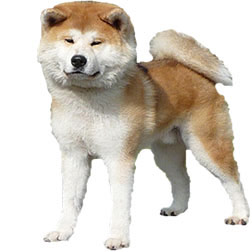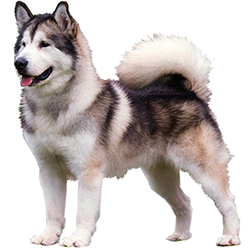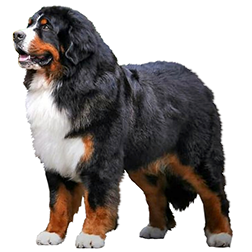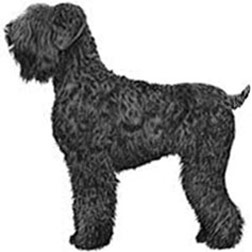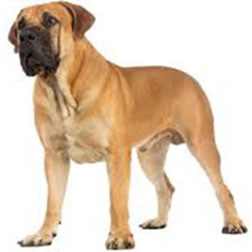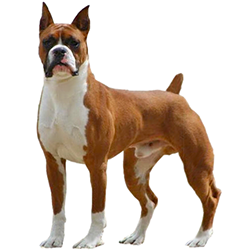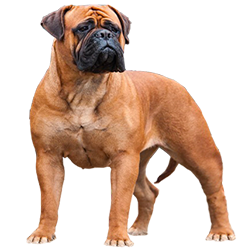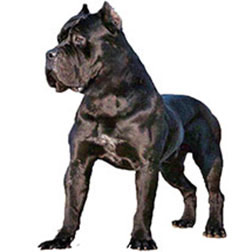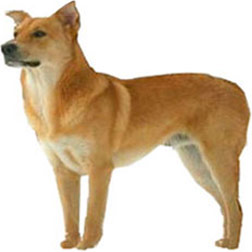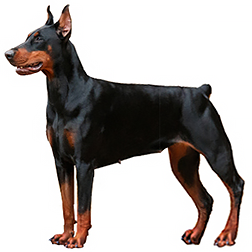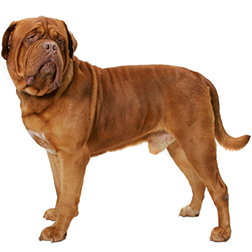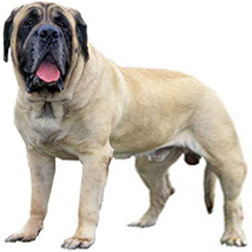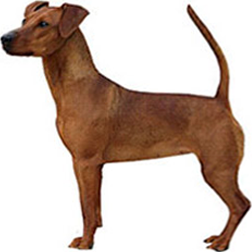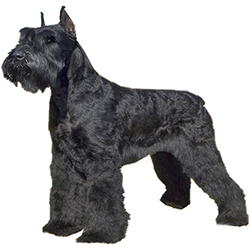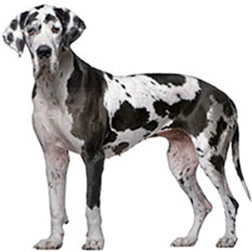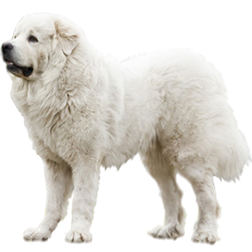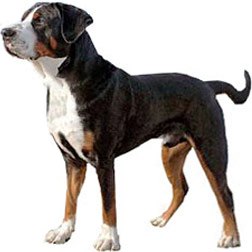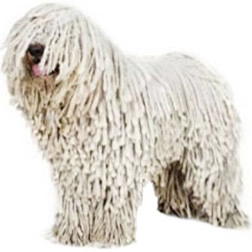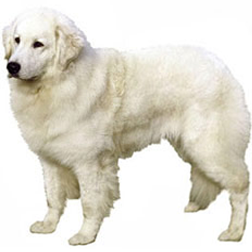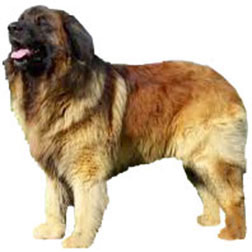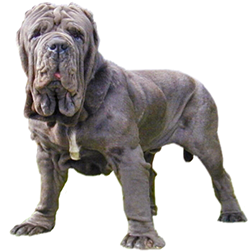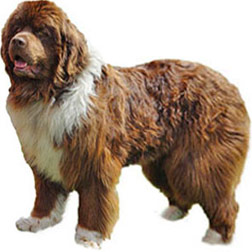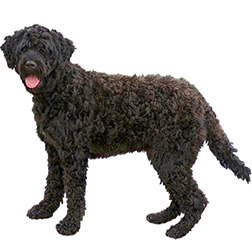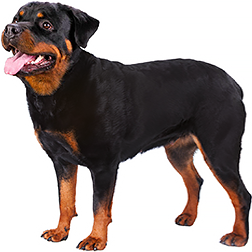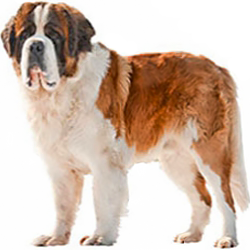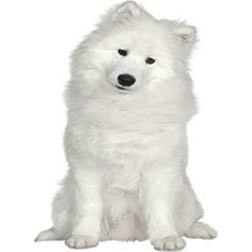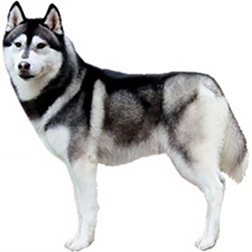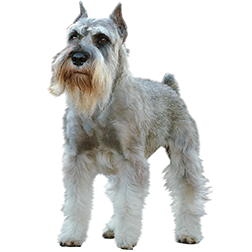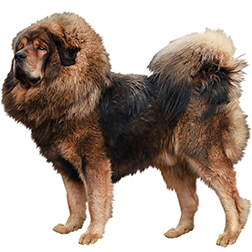Working Dog Breeds
The Ultimate Working Dogs Group Guide
The World of Working Dogs: Guardians, Companions, and Heroes
Imagine a group of dogs so versatile, so powerful, and so dependable that they’ve been humanity’s partners through centuries of change and challenge. From the snowy tundras of Siberia to the mountain passes of the Alps, the Working Dog Group represents the pinnacle of canine strength, intelligence, and loyalty. These dogs are not just pets—they’re protectors, laborers, and lifesavers. Their stories are woven into the very fabric of human history, and their influence continues to resonate in the modern world.
The Working Dog Group is a diverse collection of breeds, each with its own unique talents and traits. These are dogs bred for a purpose, whether it’s hauling sleds across icy wilderness, guarding livestock from predators, or pulling carts laden with supplies. Today, they may be found lounging in living rooms or patrolling backyards, but their hearts remain firmly tethered to their working roots.
In this guide, we’ll embark on an exciting journey through the Working Dog Group, exploring their origins, personalities, care needs, and the roles they play in today’s world. Whether you’re a seasoned enthusiast or new to the world of working breeds, this guide will serve as your trusted companion in understanding and celebrating these remarkable dogs.
What Defines a Working Dog?
At their core, working dogs are defined by their purpose. Unlike groups such as hounds or toys, the Working Dog Group is united not by appearance but by utility. These breeds are problem-solvers, chosen for their ability to perform demanding tasks. Their duties historically included guarding property, pulling heavy loads, and assisting humans in environments too harsh for survival without their help.
For example:
- The Rottweiler began its career herding cattle and pulling carts in Germany.
- The majestic Newfoundland was a fisherman's best friend, hauling nets and saving lives in icy waters.
- The powerful Akita served as a protector in Japan, guarding families and property with unyielding devotion.
Each breed brings a unique combination of physical prowess, mental acuity, and unwavering loyalty, making them invaluable companions in both work and life.
A Glimpse into History: From Ancient Guardians to Modern Marvels
The Working Dog Group has ancient roots, with some breeds dating back thousands of years. These dogs have been by humanity’s side through battles, migrations, and revolutions. Let’s dive into a few iconic examples:
- Mastiffs – With their massive frames and fearless temperaments, mastiffs were once warriors on ancient battlefields. Their legacy as protectors continues to this day, whether as the English Mastiff, known for its gentle demeanor, or the imposing Neapolitan Mastiff, famed for its watchful vigilance.
- Sled Dogs – The Alaskan Malamute and Siberian Husky epitomize endurance, braving frigid temperatures to deliver supplies across the Arctic. Their teamwork and tireless spirit made survival possible in the harshest climates.
- Mountain Rescuers – Few tales are as heartwarming as that of the Saint Bernard, famed for saving stranded travelers in the snowy Alps. Equipped with their legendary barrels of brandy, these gentle giants embody the altruism of the Working Dog Group.
As the roles of dogs have evolved, so too have the contributions of working breeds. Today, they excel as search-and-rescue heroes, therapy companions, and family protectors, proving that their adaptability is as boundless as their loyalty.
Welcome to the World of Working Dogs: Guardians, Companions, and Heroes
Imagine a group of dogs so versatile, so powerful, and so dependable that they’ve been humanity’s partners through centuries of change and challenge. From the snowy tundras of Siberia to the mountain passes of the Alps, the Working Dog Group represents the pinnacle of canine strength, intelligence, and loyalty. These dogs are not just pets—they’re protectors, laborers, and lifesavers. Their stories are woven into the very fabric of human history, and their influence continues to resonate in the modern world.
The Working Dog Group is a diverse collection of breeds, each with its own unique talents and traits. These are dogs bred for a purpose, whether it’s hauling sleds across icy wilderness, guarding livestock from predators, or pulling carts laden with supplies. Today, they may be found lounging in living rooms or patrolling backyards, but their hearts remain firmly tethered to their working roots.
In this guide, we’ll embark on an exciting journey through the Working Dog Group, exploring their origins, personalities, care needs, and the roles they play in today’s world. Whether you’re a seasoned enthusiast or new to the world of working breeds, this guide will serve as your trusted companion in understanding and celebrating these remarkable dogs.
What Defines a Working Dog?
At their core, working dogs are defined by their purpose. Unlike groups such as hounds or toys, the Working Dog Group is united not by appearance but by utility. These breeds are problem-solvers, chosen for their ability to perform demanding tasks. Their duties historically included guarding property, pulling heavy loads, and assisting humans in environments too harsh for survival without their help.
For example:
- The Rottweiler began its career herding cattle and pulling carts in Germany.
- The majestic Newfoundland was a fisherman's best friend, hauling nets and saving lives in icy waters.
- The powerful Akita served as a protector in Japan, guarding families and property with unyielding devotion.
Each breed brings a unique combination of physical prowess, mental acuity, and unwavering loyalty, making them invaluable companions in both work and life.
A Glimpse into History: From Ancient Guardians to Modern Marvels
The Working Dog Group has ancient roots, with some breeds dating back thousands of years. These dogs have been by humanity’s side through battles, migrations, and revolutions. Let’s dive into a few iconic examples:
- Mastiffs – With their massive frames and fearless temperaments, mastiffs were once warriors on ancient battlefields. Their legacy as protectors continues to this day, whether as the English Mastiff, known for its gentle demeanor, or the imposing Neapolitan Mastiff, famed for its watchful vigilance.
- Sled Dogs – The Alaskan Malamute and Siberian Husky epitomize endurance, braving frigid temperatures to deliver supplies across the Arctic. Their teamwork and tireless spirit made survival possible in the harshest climates.
- Mountain Rescuers – Few tales are as heartwarming as that of the Saint Bernard, famed for saving stranded travelers in the snowy Alps. Equipped with their legendary barrels of brandy, these gentle giants embody the altruism of the Working Dog Group.
As the roles of dogs have evolved, so too have the contributions of working breeds. Today, they excel as search-and-rescue heroes, therapy companions, and family protectors, proving that their adaptability is as boundless as their loyalty.
A Journey Through the Working Dog Group’s World
Picture a snowy mountain pass where the wind howls and the temperature plummets. A stranded traveler is huddled for warmth when, through the swirling snow, a shadow emerges—large, steady, and purposeful. It’s a Saint Bernard, barrel around its neck, ready to guide the traveler to safety. Or imagine a windswept farm where a vigilant Rottweiler patrols the grounds, ensuring the livestock stay safe from harm. These vivid scenes capture the essence of the Working Dog Group: dependable, courageous, and always ready to rise to the occasion.
Whether pulling sleds across icy tundras, guarding ancient castles, or even saving lives in modern rescue missions, the dogs in this group epitomize loyalty and hard work. Each breed’s story is steeped in history and purpose, making them a cornerstone of human-canine partnership.
Why This Group Captivates Dog Lovers
The Working Dog Group is beloved not just for its utility but for its heart. These are dogs that form unbreakable bonds with their owners, offering unwavering companionship and protection. Their sheer physical presence is awe-inspiring—think of the towering Great Dane or the robust Bernese Mountain Dog—but it’s their emotional depth that truly wins people over.
Take the Newfoundland, for example: often called "gentle giants," these dogs are as nurturing as they are strong. Families admire their patience with children, while adventurers respect their bravery in water rescues. Or consider the Boxer, whose playful energy and clownish antics make them as endearing as they are dependable.
For dog lovers, the Working Dog Group offers a blend of practicality and emotional connection. These are dogs that do more than just exist in your life—they actively enhance it, whether through their protective instincts, boundless affection, or impressive abilities.
Surprising First Impressions
When you think of working dogs, you might picture stoic, no-nonsense animals bred purely for labor. But get to know them, and you’ll find a world of surprises. Did you know that the Samoyed, famed for pulling sleds in the Arctic, is nicknamed the "Smiling Sammie" for its perpetually cheerful expression? Or that the intimidating Cane Corso is a gentle giant at heart, often described as being surprisingly affectionate and even goofy with their families?
Another common misconception is that these breeds are too high-energy for family life. While it’s true that many working dogs need plenty of exercise and mental stimulation, breeds like the Great Pyrenees and Leonberger are known for their calm, laid-back nature—perfect for a household seeking a loyal companion that doesn’t demand constant activity.
Naming Origins and General Characteristics
The Working Dog Group is aptly named for its members’ history of performing tasks essential to human survival and success. These breeds were developed to be more than just pets—they were partners. Their work spanned a variety of roles, including guarding, hauling, and rescuing. This shared heritage is reflected in their physical strength, intelligence, and problem-solving abilities.
Temperamentally, working dogs are often:
- Confident: They exude a calm assurance, essential for their historical roles.
- Loyal: Their strong bond with their owners makes them fiercely protective.
- Trainable: Their intelligence and eagerness to please make them responsive to training.
Physically, they range from the compact but muscular Portuguese Water Dog to the massive and majestic Tibetan Mastiff. Despite their differences, they share a robust build, keen senses, and an undeniable presence that commands respect.
The Working Dog Group is a testament to the incredible versatility of dogs, embodying both their physical and emotional contributions to our lives. Each breed within this group tells a story of partnership, perseverance, and love.
From Ancient Roots to Modern Homes
The story of the Working Dog Group begins thousands of years ago, in a time when humans and dogs forged partnerships out of mutual need. Early humans sought protection, assistance, and companionship, while dogs found safety and sustenance alongside humans. From these humble beginnings emerged some of the most powerful, reliable, and intelligent breeds we know today.
Take the Alaskan Malamute, whose roots trace back to the Mahlemut Inuit tribe in the Arctic. These dogs weren’t just pets—they were essential for survival, hauling sleds loaded with supplies across unforgiving landscapes. Meanwhile, the Great Pyrenees was bred in the Pyrenees Mountains of France and Spain, where its thick coat and calm demeanor made it an ideal guardian for sheep against wolves and bears.
Fast forward to the modern era, and these breeds have seamlessly transitioned into family homes while retaining their working spirit. Today, you might find a Bernese Mountain Dog herding cattle on a farm or cuddling on a suburban couch. The adaptability of these dogs is a testament to their deep connection with humans, proving that while their roles may evolve, their loyalty remains constant.
Legends and Lore
The Working Dog Group is steeped in tales of heroism and devotion. Few stories are as enduring as that of Barry the Saint Bernard, a rescue dog in the Swiss Alps during the early 1800s. Barry saved over 40 lives, navigating treacherous snowstorms to locate and guide lost travelers to safety. His name lives on as a symbol of selflessness, with a monument dedicated to him in Switzerland.
Another legendary working dog is Balto, the Siberian Husky who led his sled team on the final leg of a 600-mile journey to deliver lifesaving medicine to Nome, Alaska, during a diphtheria outbreak in 1925. Balto’s bravery has been immortalized in books, movies, and even a statue in New York’s Central Park.
The lore isn’t just about individual dogs; entire breeds carry myths of their own. The Tibetan Mastiff, for instance, is said to have been a guardian of monasteries and nomadic tribes, protecting them from both human and animal threats. Its imposing size and dignified presence inspired legends of supernatural guardianship, earning it a revered place in Tibetan culture.
Cultural Connections
Working dogs have long been woven into the fabric of human cultures, celebrated for their utility and companionship. In Japan, the Akita is considered a national treasure, symbolizing loyalty and protection. The breed gained international fame through the story of Hachiko, an Akita who waited every day at a train station for his deceased owner to return—a story that continues to inspire devotion worldwide.
In Switzerland, the Bernese Mountain Dog has been an integral part of alpine farming culture for centuries, pulling carts filled with milk and cheese from the mountains to local markets. Meanwhile, the Newfoundland is deeply connected to maritime traditions, where it was cherished for its ability to rescue sailors from icy waters, becoming a steadfast partner to fishermen.
Even in modern times, working dogs are celebrated for their contributions. The Rottweiler, once a cattle-driving dog in Germany, is now a symbol of strength and reliability, often employed in police and military work. The Samoyed, originally a reindeer herder in Siberia, is now equally admired for its role as a therapy dog, bringing comfort and joy to people around the world.
From ancient guardians to contemporary companions, the Working Dog Group has not just adapted to human needs but has enriched cultures across the globe. These dogs embody the spirit of partnership, bridging the gap between history and modernity in ways that continue to inspire and awe.
What Makes This Group Unique?
The Working Dog Group is like the all-star team of the canine world—each breed brings a unique skill set, but they all share one thing in common: purpose. These dogs aren’t just admired for their looks or size (though they certainly have both in abundance); they’re celebrated for their abilities and drive. Whether it’s hauling, guarding, or rescuing, working dogs were bred to excel at tasks that humans couldn’t handle alone.
Think of it this way: if dog groups were a symphony, the Working Dog Group would be the percussion section. Powerful, commanding, and essential to the performance, these dogs set the rhythm for action and reliability. Their uniqueness lies in their versatility; one moment they’re protecting their families, and the next, they’re pulling sleds across Arctic tundras or helping police solve crimes.
Meet the Judges
Classifying a breed into the Working Dog Group isn’t as simple as slapping a label on a pedigree. Kennel clubs like the American Kennel Club (AKC) and the Fédération Cynologique Internationale (FCI) have meticulous standards for each breed, from temperament to physical structure. Judges evaluate these dogs with a discerning eye, ensuring they meet the criteria set forth in breed standards.
Fun fact: some of the most heated debates at dog shows don’t happen in the ring but in the discussions around breed classification. For instance, should a particularly agile mastiff be reclassified into the Working Group? Or does its temperament suggest a better fit in the Guardian Breeds category? These decisions can feel as political as a presidential election in the dog world!
Judges also face challenges with breeds that seem to straddle the line between groups. Take the Portuguese Water Dog, for example. It’s technically in the Working Group, but its agility and love of water often make people wonder if it should dive into the Sporting Group instead.
Breed Wars
Ah, the drama of the "Breed Wars." The Working Dog Group is no stranger to controversies about who belongs and who doesn’t. For example, the Giant Schnauzer was once seen as a farm dog but later found its way into the Working Group thanks to its impressive ability to guard and protect. Similarly, the Doberman Pinscher, originally bred for personal protection, has faced debates over whether its inclusion in the Working Group undermines its versatility as a family pet.
One of the more eyebrow-raising debates involves the Samoyed, with some enthusiasts arguing that its affectionate nature makes it better suited for the Companion Group. However, its historical role as a sled-puller and reindeer herder firmly cements its place in the Working Dog Group.
These debates add a layer of intrigue to dog shows, sparking passionate discussions among breeders, owners, and judges alike. After all, the stakes are high—classification determines not only competition categories but also a breed’s reputation and legacy.
Variations Across Regions
What’s considered a Working Dog in one country might belong to an entirely different group elsewhere. For example, the Akita is classified in the Working Group by the AKC but falls under the Utility Group in the United Kingdom’s Kennel Club standards. These variations stem from differences in cultural emphasis and historical use.
The Fédération Cynologique Internationale (FCI), which oversees dog classifications for much of Europe, divides breeds into 10 groups, including separate categories for guard dogs and draft dogs. The Great Dane, for instance, is placed in Group 2 by the FCI, alongside other Molossoid breeds, while the AKC keeps it firmly in the Working Dog Group.
These regional differences highlight the complexity and diversity of dog classifications, reminding us that while we may love the same breeds, the way we celebrate and categorize them often depends on cultural context.
A Walk Through the Lookbook
Step onto the runway of the Working Dog Group, where every breed struts with purpose and style. This group boasts an impressive range of physical characteristics, from the towering elegance of the Great Dane to the shaggy, mop-like coat of the Komondor. Think of it as a fashion show where function meets flair—each breed’s appearance is tailored not just for beauty, but for the job it was born to do.
First up, the Bernese Mountain Dog, with its tri-colored coat that’s as warm as its personality. Its thick, weather-resistant fur isn’t just for show; it was designed to withstand chilly Alpine climates. Then there’s the Rottweiler, with its powerful, compact frame and iconic black-and-tan coloring—a look that practically says, “Don’t mess with me.”
Of course, the Samoyed steals the spotlight with its snow-white, fluffy coat and perpetual “Sammie smile,” a feature as functional as it is charming. That thick fur kept Samoyeds warm in the Arctic tundra, while their upturned lips prevented drool from freezing in frigid temperatures.
Whether it’s the muscular build of the Boxer, the streamlined body of the Doberman Pinscher, or the massive, bear-like presence of the Tibetan Mastiff, this group’s diversity is as captivating as it is practical.
Quirky Traits and Fun Facts
The Working Dog Group is brimming with unique physical features that are as fascinating as they are functional. Take the Newfoundland, whose webbed feet make it a natural swimmer, perfect for water rescues. Or the Komondor, whose corded coat not only serves as camouflage among sheep but also provides protection from harsh weather and predators.
Did you know that the Great Pyrenees has double dewclaws on its hind legs? These extra toes give it better balance and traction on steep mountain terrain. Meanwhile, the Portuguese Water Dog has a tail that acts as a rudder when swimming, making it a top-tier aquatic athlete.
And let’s not forget the Siberian Husky, whose piercing blue eyes and thick, multi-colored coat might scream "model material," but its true talent lies in its ability to thrive in sub-zero temperatures, thanks to a double coat that traps warmth like a thermal blanket.
Diversity Within the Group
The Working Dog Group is a testament to the incredible variety within the canine world. From compact breeds like the Standard Schnauzer to massive giants like the English Mastiff, there’s a working dog to suit every taste and purpose. Each breed showcases its own blend of power, elegance, and practicality, proving that “one size fits all” couldn’t be further from the truth.
The group’s diversity also extends to coat types. You’ll find everything from the silky, luxurious fur of the Leonberger to the short, sleek coat of the German Pinscher, and the curly, water-repellent coat of the Portuguese Water Dog. Whether you prefer a dog that looks like it stepped out of a salon or one ready to tackle a rugged mountainside, the Working Dog Group delivers.
What’s perhaps most striking about this group is how its visual variety mirrors its adaptability. These dogs aren’t just about looks—they’re about performing tasks that require strength, intelligence, and resilience. And while their appearances may differ wildly, their shared purpose unites them, making the Working Dog Group a dazzling display of form meeting function.
The Group’s Signature Charm
The Working Dog Group is a study in strength and devotion, but what truly sets these dogs apart is their remarkable personality. These aren’t just dogs who can work; they’re dogs who want to work, and their zest for life is infectious. Whether they’re guarding, herding, or simply snoozing at your feet, working dogs exude a quiet confidence and a deep sense of purpose.
Take the Boxer, for example—a breed as known for its playful antics as its protective instincts. Picture a Boxer bounding through the yard, a goofy grin plastered across its face, only to turn into a vigilant watchdog the moment a stranger approaches. Or consider the Great Dane, whose imposing size belies its gentle, almost clownish demeanor. Despite their serious looks, these breeds are often the jokers of the dog world, finding joy in making their families laugh.
One trait that unites many working dogs is their unwavering loyalty. The Rottweiler, for instance, is famous for forming strong bonds with its family, sometimes acting as a shadow, following loved ones from room to room. Meanwhile, the Samoyed, known for its ever-present smile, thrives on being part of the family unit, often acting as a furry morale booster during tough times.
What Owners Love Most
Ask any owner of a working dog, and they’ll likely tell you it’s the combination of strength and heart that makes these breeds so special. One of the most beloved traits is their adaptability: these dogs can go from being fierce protectors to affectionate cuddle bugs in a heartbeat. The Bernese Mountain Dog, for example, is a gentle giant who loves nothing more than leaning into its owner for a good snuggle—a behavior affectionately called “the Berner lean.”
Another endearing trait is their intelligence. Breeds like the Doberman Pinscher and Giant Schnauzer are quick learners who thrive on challenges, making training sessions as rewarding for the owner as they are for the dog. Owners often marvel at how these dogs seem to understand not just commands, but emotions, offering comfort during stressful times with a knowing nuzzle.
And let’s not forget their sense of humor. The Newfoundland, despite its calm demeanor, is known for its playful water antics, often turning a simple dip in the lake into a full-blown comedy routine. Meanwhile, the Standard Schnauzer has a mischievous streak, delighting its owners with clever tricks that keep everyone on their toes.
Unexpected Personalities
While working dogs are often associated with traits like bravery and loyalty, some individuals defy expectations in the most delightful ways. Take “Buddy,” a Great Pyrenees who, instead of guarding livestock, became a local celebrity for his love of paddleboarding. This 120-pound gentle giant could often be seen gliding gracefully across the lake with his owner, earning waves and cheers from onlookers.
Then there’s “Luna,” a Bullmastiff who turned heads at her obedience class not for her discipline, but for her quirky habit of greeting every other dog with a dramatic play bow—breaking the stereotype of her breed’s typically reserved demeanor.
And who could forget “Max,” a Komondor who, despite his breed’s reputation as a guardian, had an unshakable fear of squirrels. Rather than confront the tiny intruders, Max would hilariously retreat to the safety of the house, his corded coat bouncing with every step.
These stories remind us that, while each breed has its hallmark traits, every dog is an individual. Working dogs may be strong, dependable, and protective, but their unique quirks and unexpected personalities make them even more lovable.
Original Roles and Modern-Day Marvels
The Working Dog Group has always been defined by its purpose. Historically, these dogs were bred to perform tasks that required strength, intelligence, and determination. From guarding livestock and property to pulling sleds and rescuing stranded travelers, working dogs have been humanity’s partners in survival. But what makes this group truly fascinating is how seamlessly they’ve adapted to modern life.
The Great Pyrenees, once a tireless guardian of sheep in the Pyrenees Mountains, now often serves as a loyal family companion, still ever-watchful of its household "flock." Similarly, the Newfoundland, originally tasked with hauling fishing nets and saving sailors, continues its water rescue work today but is just as likely to be found at a lakeside cabin, delighting its family with its gentle, nurturing nature.
Modern working dogs have also embraced roles unimaginable in their historical context. The Doberman Pinscher, initially bred for personal protection, now excels as a therapy dog, providing comfort to hospital patients. Meanwhile, the Samoyed, once a sled-puller, has become a social media darling, its fluffy white coat and signature smile capturing hearts worldwide.
Famous Dogs in History
Some working dogs have risen to legendary status, leaving paw prints in the annals of history. One such hero is Barry, a Saint Bernard who served at the Great St. Bernard Hospice in the Swiss Alps during the early 19th century. Barry is credited with saving over 40 lives, navigating treacherous snowfields to find lost travelers and guide them to safety.
Another famous working dog is Balto, the Siberian Husky who led the final leg of the 1925 serum run to Nome, Alaska, delivering life-saving medicine to a town facing a diphtheria outbreak. Balto’s courage under extreme conditions turned him into a national hero, with his story immortalized in books, films, and a statue in New York City’s Central Park.
Even fictional characters have been inspired by real working dogs. The Newfoundland, for example, was the model for the loyal dog in J.M. Barrie’s Peter Pan, a testament to the breed’s reputation as a dependable family guardian.
Superstars in Action
Today, working dogs continue to shine in roles both traditional and contemporary. The Rottweiler, for instance, is a favorite in police and military work, thanks to its intelligence, strength, and unwavering loyalty. Its keen senses and imposing presence make it an ideal partner for tasks ranging from search-and-rescue to drug detection.
The Portuguese Water Dog, once indispensable to fishermen, has transitioned into a modern-day multitasker. These dogs are often found excelling in dog sports like agility and obedience, as well as serving as therapy dogs, bringing joy and comfort to people in need.
Then there’s the Bernese Mountain Dog, whose cart-pulling heritage is celebrated in modern carting competitions, where these gentle giants showcase their strength and willingness to work. Meanwhile, the Siberian Husky continues to dazzle in sled dog races like the Iditarod, proving that its endurance and teamwork are timeless qualities.
Even breeds like the Akita, with their history as guardians, have found unique modern roles. In Japan, Akitas are symbols of loyalty and are often presented as gifts of goodwill. And let’s not forget the Samoyed, whose cheerful disposition and fluffy appearance have made it a favorite in therapy programs and, yes, as an Instagram influencer!
From their storied pasts to their diverse roles today, the Working Dog Group proves that their purpose is as dynamic and enduring as the dogs themselves. These are not just animals of labor but partners, protectors, and, increasingly, stars in their own right.
Training Tales
Training a working dog is like unlocking the potential of a superhero—it’s a rewarding journey filled with moments of awe, accomplishment, and the occasional comic relief. Take the story of Max, a Bernese Mountain Dog whose owner decided to teach him to pull a cart. On his first attempt, Max eagerly trotted off… right through a vegetable patch, proudly delivering a cart full of squashed tomatoes to the neighbors! While Max eventually mastered his task, his early enthusiasm became a neighborhood legend.
Then there’s Luna, a Boxer with a flair for the dramatic. During a group obedience class, Luna discovered the joy of “fake fainting” when asked to lie down. Instead of simply obeying, she’d flop to the floor with a theatrical groan, stealing both laughs and the spotlight.
These tales remind us that while training working dogs can come with its challenges, it’s also filled with joy, humor, and moments that deepen the bond between dog and owner.
Tips from the Pros
Training a working dog requires understanding their natural instincts and channeling them into productive behaviors. Here are some actionable tips tailored to this group:
- Tap into Their Purpose: Working dogs thrive when given a job, so incorporate tasks into their training. For example, a Newfoundland may enjoy retrieving objects from water, while a Rottweiler could excel in advanced obedience drills that mimic protective duties.
- Use Positive Reinforcement: These dogs respond best to encouragement and rewards. Whether it’s a treat, a toy, or a simple “Good job!”, positive reinforcement helps reinforce desired behaviors.
- Mental Stimulation Matters: Working dogs are highly intelligent and need their minds exercised as much as their bodies. Puzzle toys, scent work, and agility courses are great ways to keep them mentally sharp.
- Consistency Is Key: Working dogs are eager to learn but can become confused by mixed signals. Establish clear commands and routines, and stick to them.
- Early Socialization: Many breeds in this group, such as the Akita or Doberman Pinscher, benefit from early exposure to a variety of people, places, and situations to develop confidence and reduce the risk of overprotectiveness.
Challenges and Triumphs
Training a working dog isn’t always smooth sailing, but the triumphs make every challenge worthwhile. One common hurdle is managing their independent streak. Breeds like the Great Pyrenees are known for their decision-making skills, which can sometimes translate to stubbornness during training. The key? Patience and persistence. Rather than forcing compliance, build trust and show them why the task is worth their while.
Another challenge is their high energy levels. A Siberian Husky, for instance, might decide that running laps around your yard is more fun than heeling on a leash. Creative techniques, such as turning training into a game or using long training sessions to burn off energy, can help keep these energetic breeds engaged.
For some breeds, like the Samoyed, the challenge lies in their sociable nature—they’re more interested in greeting new friends than focusing on commands. To overcome this, use short, frequent training sessions in low-distraction environments before gradually introducing more distractions.
But with every challenge comes triumph. Watching a Leonberger learn to gently carry a basket of laundry upstairs or seeing a Great Dane nail every command in an obedience trial is a testament to their intelligence and adaptability. The process strengthens your bond, transforming training from a chore into a shared adventure.
Keeping Them Happy and Healthy
Caring for a working dog is like maintaining a high-performance sports car—they’re built to excel, but they need the right care to stay in top form. These dogs thrive on a balance of physical exercise, mental stimulation, and regular grooming to keep them looking and feeling their best.
For starters, nutrition is key. Think of their diet as premium fuel for a high-energy engine. Many working dogs, like the Siberian Husky or Boxer, require a diet rich in protein to support their active lifestyles. But don’t overlook breeds like the Great Pyrenees, which, despite their size, often need surprisingly moderate calorie intake to maintain a healthy weight.
Grooming needs vary by breed. The Komondor’s iconic corded coat, for example, requires careful maintenance to prevent matting and keep it functional as protection. Meanwhile, the Bernese Mountain Dog benefits from weekly brushing to keep its luxurious coat free of tangles and debris. And while the Samoyed’s snow-white fur looks pristine, it’s prone to shedding—so be prepared for some extra vacuuming!
Vet visits and regular health checks are also vital. Breeds like the Rottweiler and Doberman Pinscher can be prone to genetic conditions such as hip dysplasia or heart issues, so early screenings and preventative care are essential. With the right attention, these dogs can live long, healthy, and happy lives.
Weird but True
The Working Dog Group is full of fascinating quirks, especially when it comes to health and habits. Did you know that the Newfoundland has a unique swimming stroke? Unlike most dogs, Newfies paddle their legs down and out in a motion that’s more efficient in water, making them natural-born rescuers.
Another quirky fact? Samoyeds are known for their hypoallergenic coats. While no dog is entirely allergen-free, the Samoyed’s fur produces less dander than many breeds, which can make them more tolerable for allergy sufferers. But be warned—they shed enough fluff to knit an entire winter wardrobe!
And let’s not forget the Tibetan Mastiff, whose thick double coat is so insulating that they’ve been known to snooze comfortably in the snow. Their unique adaptation helps them thrive in the harsh climates of their native Tibet, but in warmer environments, it’s crucial to keep them cool and hydrated.
Playtime is Medicine
For working dogs, play isn’t just fun—it’s essential. These breeds have energy levels that demand regular outlets, and without sufficient exercise, they can become bored or destructive. A good play session not only keeps them physically fit but also stimulates their sharp minds.
Breeds like the Siberian Husky and Alaskan Malamute excel in high-energy activities like running, hiking, or pulling a sled (even if it’s just your kids on a snowy day). Meanwhile, the Portuguese Water Dog will happily spend hours fetching toys from the water, combining exercise with its love of swimming.
Interactive games like hide-and-seek or puzzle toys are great for mental stimulation, particularly for breeds like the Doberman Pinscher or Rottweiler, which thrive on problem-solving tasks. Even a simple game of fetch or tug-of-war can be a bonding experience that keeps your dog happy and healthy.
For older or less active working dogs, gentle activities like strolls in the park or light play with a favorite toy can still provide the stimulation they need. The key is consistency—making daily exercise and engagement part of their routine ensures a balanced, fulfilled life.
Your New Best Friend
Working dogs are the ultimate team players, forming deep, lasting bonds with their families. They thrive on connection, and their loyalty is second to none. Whether it’s a Newfoundland gently watching over a child by the water’s edge or a Rottweiler shadowing its owner through every room of the house, these dogs are more than pets—they’re companions for life.
Take “Luna,” a Bernese Mountain Dog who instinctively leaned against her owner during a tough day, offering silent support with her comforting presence. Or “Max,” a Great Dane who refused to leave his owner’s side during recovery from surgery, his enormous frame curled protectively by the bed. Stories like these highlight the heartwarming connection working dogs have with their families, making them cherished members of any household.
Lessons in Friendship
Socializing a working dog is essential to helping them become confident and well-rounded companions. These breeds are naturally intelligent and observant, but early exposure to a variety of people, places, and situations helps them adapt to family life and thrive in new environments.
Here are some practical tips for socializing your working dog:
- Start Early: Begin socialization as a puppy to build positive associations. Introduce your dog to a variety of environments, from busy parks to quiet neighborhoods, ensuring each experience is safe and enjoyable.
- Kids and Seniors: Working dogs like the Great Pyrenees and Samoyed are known for their gentle nature with children, while breeds like the Newfoundland often excel as therapy dogs for seniors. Supervised interactions with kids should be calm and controlled, with clear boundaries to ensure mutual respect.
- Other Pets: Many working dogs, like the Leonberger and Portuguese Water Dog, can get along well with other pets if properly introduced. Start with neutral territory, allowing the animals to meet without pressure. Reward positive behavior and patience with treats and praise.
- Avoid Overprotection: Breeds like the Doberman Pinscher or Akita may naturally exhibit protective instincts. Gradual exposure to friendly strangers can help them differentiate between everyday situations and actual threats.
One memorable example comes from “Bella,” a Samoyed who initially hesitated around the family cat, “Mittens.” With patience and gentle encouragement, Bella went from cautious sniffing to napping side-by-side with her feline friend—a testament to the power of positive socialization.
Building Lifelong Bonds
Proper socialization is more than just teaching a dog to behave; it’s about fostering trust and ensuring your working dog feels secure in its environment. From playing fetch with kids in the yard to accompanying seniors on peaceful walks, these dogs bring joy to every member of the family. Their innate ability to bond deeply makes them ideal companions, and with the right socialization, they’ll fit seamlessly into any home.
Designing the Perfect Dog Space
Creating the ideal living space for a working dog is like designing a home for an athlete—they need room to stretch, relax, and occasionally let loose. Whether you have a sprawling yard or a cozy apartment, you can tailor your home to suit your working dog’s needs with a bit of creativity.
Start with the basics: a safe, comfortable resting spot. Think of it as their personal recharge station after a hard day of "guarding" the house or playing fetch. A cozy corner with a durable, supportive bed is perfect for larger breeds like the Bernese Mountain Dog or Great Pyrenees. For breeds with a thick coat, like the Samoyed, opt for a cooling mat to keep them comfortable.
Next, consider their energy levels. A Boxer or Siberian Husky will appreciate a designated play zone, even indoors. Use puzzle toys, snuffle mats, or even a DIY obstacle course to keep them entertained. If you’re feeling ambitious, why not add a "doggy den"? This can be as simple as a crate with a comfy blanket or as elaborate as a custom-built nook under the stairs.
And don’t forget the humor: If you’re dealing with a Newfoundland, be prepared for some water antics—perhaps a kiddie pool in the yard or a waterproof area for drying off after a swim!
City or Country Life?
One of the great things about the Working Dog Group is their adaptability, but some environments may suit them better than others. For instance, a rural home with plenty of open space is ideal for breeds like the Leonberger or Great Pyrenees, which thrive when they can roam and keep an eye on their "territory."
City dwellers, don’t despair! With the right adjustments, working dogs can thrive in apartments or urban homes. The key is consistent exercise and mental stimulation. Daily walks, trips to the dog park, and indoor games can help high-energy breeds like the Doberman Pinscher or Portuguese Water Dog burn off steam. Be sure to provide them with plenty of training and engagement to prevent boredom.
No matter where you live, working dogs need regular opportunities to stretch their legs. For apartment living, breeds like the Rottweiler, known for their calm demeanor indoors, might adapt more easily than others. Just remember: a tired dog is a happy dog, no matter the setting!
Climate and Quirks
Working dogs are as diverse in their climate preferences as they are in their looks. Some breeds, like the Alaskan Malamute or Siberian Husky, were born for the cold. These dogs revel in snow, happily bounding through drifts like furry snowplows. Just don’t expect them to share your enthusiasm for a summer heatwave—they’ll appreciate a shaded yard or an air-conditioned retreat when the mercury rises.
On the flip side, breeds like the Boxer and Doberman Pinscher, with their short coats, may find winter weather a bit too brisk. A warm dog coat or sweater can keep them cozy during chilly walks. And then there’s the Newfoundland, whose thick coat and love of water make it a natural in cold climates but might require some extra care in hotter regions—think early morning walks and lots of fresh water.
One memorable anecdote involves “Charlie,” a Great Dane who refused to step outside during a rainstorm. His owner cleverly used an oversized umbrella to coax him out, creating a hilarious sight that became the talk of the neighborhood. Whether they’re frolicking in snow or lounging in the shade, these dogs always find a way to adapt to their surroundings.
Did You Know?
The Working Dog Group is full of fascinating trivia and delightful surprises. Here are some tidbits that might just make you love these hardworking breeds even more:
- Newfoundland dogs have been known to save drowning people entirely on their own, recognizing distress and leaping into action without any command. Some Newfies even instinctively grab people by the wrist, pulling them to safety with a firm but gentle grip.
- The Samoyed’s fluffy white coat isn’t just for show—it’s been used to spin yarn for clothing and blankets! Samoyed fur is hypoallergenic and remarkably warm, making it a favorite of crafty dog owners.
- The Komondor’s iconic corded coat isn’t just a quirky hairstyle—it serves as armor! This natural defense helped protect these livestock guardians from wolf bites and harsh weather.
- The Doberman Pinscher was originally bred by a tax collector, Louis Dobermann, who wanted a loyal and protective companion during his rounds. Talk about a watchdog with a purpose!
- Saint Bernards used to carry small barrels of brandy around their necks during rescue missions in the Swiss Alps—not because travelers needed a drink, but because the alcohol would help revive them after being found in the snow.
Bizarre Habits and Endearing Oddities
Every working dog has its quirks, and these lovable traits are part of what makes them unforgettable:
- The Great Dane is known as the “gentle giant,” but don’t be surprised if one tries to climb onto your lap—despite weighing more than some humans. Their cluelessness about their size is part of their charm.
- Boxers are notorious for their “kidney bean dance,” a wiggly, butt-shaking maneuver they perform when excited. If you’ve never seen a Boxer greet someone, you’re missing out on one of the happiest displays in the dog world.
- Akitas have a habit of “talking” to their owners. Unlike typical barking, they emit low grumbles, yowls, and sighs, creating a unique form of canine conversation.
- The Portuguese Water Dog is an expert in water acrobatics. Not only can they dive and retrieve underwater, but some have been seen performing impressive leaps into the pool, earning them the nickname "canine dolphins."
- Tibetan Mastiffs are known for their unique "lion-like" manes and their uncanny ability to distinguish between a threat and a friendly visitor. They might look intimidating, but to their families, they’re giant teddy bears.
- The Bernese Mountain Dog has an adorable habit of “helping” with chores, whether it’s carrying groceries or pulling small wagons. One famous Bernese even became a local celebrity for delivering newspapers around town!
These quirks and oddities highlight the individuality of each breed in the Working Dog Group, proving that their personalities are as big and bold as their roles.
Breaking the Bank or Budget-Friendly?
Owning a working dog is an investment—both financially and emotionally. While the upfront costs of acquiring a purebred dog from this group can be significant, the value they bring to your life far outweighs the expense. Whether it’s the purchase price, veterinary care, food, or grooming, these dogs require thoughtful budgeting to ensure they’re happy and healthy.
For starters, many breeds in the Working Dog Group are large, which means larger appetites. Feeding a Great Dane or Newfoundland can feel like stocking a small buffet, but investing in high-quality food helps maintain their health and energy levels. Grooming needs also vary; breeds like the Komondor or Samoyed may require professional grooming, while others, like the Doberman Pinscher, are relatively low-maintenance in the coat department.
Veterinary care, including preventative treatments, is a crucial consideration. Some breeds in this group, like the Bernese Mountain Dog or Rottweiler, are prone to genetic conditions such as hip dysplasia or heart issues. Early screenings and regular check-ups are vital, but they can add to the overall cost of ownership.
While the financial investment can be significant, it’s important to remember that these dogs are more than just pets—they’re partners. The emotional rewards of their companionship, loyalty, and love make every dollar spent worthwhile.
The Real Cost of Happiness
The joy of owning a working dog isn’t something you can put a price tag on. These dogs enrich lives in ways that go far beyond monetary value, offering unwavering loyalty, protection, and plenty of heartwarming moments.
Take “Buddy,” a Newfoundland who once pulled his owner’s kayak to shore when they got caught in a current. Or “Luna,” a Boxer who became a certified therapy dog, bringing comfort to children in hospitals. These moments of heroism and kindness remind us why these breeds are so cherished.
Even the everyday joys of owning a working dog make them worth every penny. The way a Samoyed greets you with a wagging tail and a signature smile after a long day, or the proud look on a Bernese Mountain Dog’s face after completing a small “job,” fills your life with constant delight.
One particularly touching story involves “Max,” a Saint Bernard, who instinctively stood guard over his family’s toddler, ensuring the child didn’t wander too far during a camping trip. His protective nature wasn’t just endearing—it gave his family a profound sense of security.
These dogs remind us that the real cost of happiness isn’t measured in dollars but in the love, loyalty, and companionship they provide. Owning a working dog is a privilege, and the rewards far outweigh the financial considerations.
Ethical and Legal Considerations
Being an Ethical Advocate
Owning a working dog is a privilege that comes with great responsibility. These incredible animals depend on us for their well-being, and it’s up to their owners to ensure they live healthy, happy, and fulfilling lives. One of the most important steps is to advocate for ethical breeding practices. Reputable breeders prioritize the health, temperament, and long-term welfare of their dogs, steering clear of harmful trends or irresponsible practices.
Consider the case of overbreeding in popular working breeds like the Bernese Mountain Dog or Rottweiler. While demand for these breeds can lead to unethical shortcuts, responsible owners educate themselves and support breeders who conduct health screenings and uphold breed standards. By choosing wisely, you’re not only gaining a loyal companion but also contributing to the preservation of these remarkable breeds.
Unleashing the Rules
Legal considerations for owning working dogs can feel daunting, but they’re an essential part of responsible ownership. Relatable scenarios can help bring these rules to life. For example, did you know that in many areas, breeds like the Doberman Pinscher or Rottweiler may be subject to breed-specific legislation (BSL)? While these laws are controversial, understanding them ensures you’re prepared to meet local requirements.
Leash laws are another common issue. Picture a Siberian Husky bolting after a squirrel in an unfenced yard—hilarious in hindsight but a potential legal headache if they wander into restricted areas. Staying informed about local ordinances and securing your property can prevent these situations and keep your dog safe.
Lastly, be aware of your dog’s role as a guardian. Breeds like the Akita or Great Pyrenees may instinctively protect your property, but ensuring they’re well-trained and socialized minimizes the risk of misunderstandings with visitors or neighbors. With a little preparation, you can navigate these rules confidently while fostering a positive image for working dogs.
Group-Specific Activities and Sports
From Couch Potatoes to Champions
Working dogs are natural athletes, and they thrive when given tasks that engage their bodies and minds. While some enjoy lounging with their families, most breeds in this group excel in activities that tap into their instincts.
For high-energy dogs like the Boxer or Portuguese Water Dog, agility courses and flyball competitions are a perfect fit. Picture your dog zipping through tunnels, leaping over hurdles, and racing back with a triumphant grin. Even less intense activities, like nose work or hide-and-seek, can provide hours of mental stimulation.
For water-loving breeds like the Newfoundland, dock diving or water rescue training is a natural choice. Watching a Newfie launch itself into the water to fetch a toy—or even help a swimmer—can be as thrilling for the owner as it is for the dog.
And let’s not forget the Saint Bernard, whose gentle demeanor makes them ideal for therapy dog programs. Whether visiting hospitals or calming nervous travelers at airports, these dogs prove their versatility by excelling in roles that require emotional intelligence and patience.
Tail-Wagging Competitions
The Working Dog Group shines in a variety of competitions, where their strength, intelligence, and versatility are on full display. Events like carting trials celebrate the heritage of breeds like the Bernese Mountain Dog or Leonberger, who once hauled goods for farmers. Imagine these gentle giants pulling colorful wagons in a spirited competition!
Sled dog races like the Iditarod are a testament to the endurance and teamwork of breeds like the Siberian Husky and Alaskan Malamute. These events capture the spirit of their historical roles, reminding us why these dogs have been cherished partners for centuries.
For those with an eye on showmanship, conformation events are the ultimate stage for breeds like the Tibetan Mastiff or Great Dane, where their beauty and poise are judged against breed standards. And obedience trials highlight the intelligence and trainability of breeds like the Doberman Pinscher, proving they can balance power with precision.
Whether competing on land, water, or snow, working dogs bring their unique charm and capabilities to every event, showcasing why they’re among the most versatile and beloved groups in the canine world.
Famous Breeds and Notable Dogs
Spotlight on Stars
The Working Dog Group is home to some of the most heroic and celebrated canines in history. These dogs have gone above and beyond, proving their dedication and courage time and time again.
One such legend is Barry the Saint Bernard, who served as a rescue dog in the Swiss Alps during the early 19th century. Barry is credited with saving over 40 lives, often carrying stranded travelers to safety through snow-covered mountains. His legacy lives on in museums and monuments, inspiring dog lovers worldwide.
Then there’s Balto, the Siberian Husky who led his team on the final leg of the 1925 serum run to Nome, Alaska. His determination in treacherous conditions helped deliver life-saving medicine to a remote community, and his story is now immortalized in statues and films.
Modern heroes include Rico the Doberman Pinscher, a police dog renowned for his work in apprehending criminals and finding missing persons. Rico’s intelligence and bravery earned him numerous awards and the undying admiration of his human colleagues.
Paws in Pop Culture
The Working Dog Group’s influence extends beyond real-life heroics—they’ve also left an indelible mark on pop culture, captivating audiences with their strength, beauty, and charm.
In the movie Beethoven, the lovable Saint Bernard became a household name, showcasing the breed’s gentle and protective nature (along with its ability to cause comedic chaos!). Similarly, the animated classic Balto brought the story of the heroic Husky to younger generations, ensuring his legacy lives on.
The Great Dane also had its moment in the spotlight with Scooby-Doo, the iconic, ghost-fearing detective who brought humor and heart to countless adventures. Meanwhile, the Boxer made waves in The Incredible Journey, displaying courage and determination that mirrored the breed’s real-life traits.
In literature, the Newfoundland played a key role in J.M. Barrie’s Peter Pan as Nana, the loyal family nanny-dog who kept the Darling children safe. And for a more fantastical take, the Tibetan Mastiff has often been depicted as a guardian in folklore, with some stories even suggesting mystical powers.
Whether in real life or on the silver screen, working dogs have captured hearts and inspired audiences with their heroism, loyalty, and unforgettable personalities.
Practical Tips for Owners
Pro Tips for Newbies
Bringing a working dog into your home is like welcoming a teammate into your life—they’re ready to work, play, and love, but they need guidance to shine. Here are some easy-to-follow tips for new owners:
- Set a Routine Early: Working dogs thrive on structure. Whether it’s mealtime, walks, or play sessions, a consistent schedule helps them feel secure and engaged. Think of it as clocking in and out of their "job" each day.
- Give Them a Job: These dogs are bred for purpose, so keep their minds and bodies busy. This doesn’t mean hiring them as your personal assistant (though wouldn’t that be nice?), but tasks like fetching the newspaper, learning new tricks, or agility courses can keep them fulfilled.
- Socialization is Key: Introduce them to different people, places, and situations early on. A well-socialized Doberman Pinscher or Rottweiler will feel confident and at ease, making them a joy to live with.
- Invest in Training: These dogs are intelligent and eager to learn, so take advantage of that! Consistent, positive-reinforcement training not only curbs unwanted behavior but also strengthens your bond.
- Prepare for Shedding (and Drool): If you’re adopting a fluffy Bernese Mountain Dog or a slobbery Saint Bernard, embrace the mess. Stock up on lint rollers and keep a towel handy—it’s a small price to pay for unconditional love.
Common Owner Missteps
Owning a working dog can come with a learning curve, and it’s easy to make a few rookie mistakes. Here are some common blunders to avoid (with a humorous twist):
- Underestimating Their Energy: You might think, “A couple of laps around the yard will tire them out,” but a Siberian Husky or Boxer would call that a warm-up. These dogs need serious exercise, or you might find them redecorating your house—shredded couch cushions, anyone?
- Skipping Mental Stimulation: A bored working dog is a mischievous working dog. Imagine your Portuguese Water Dog deciding the sprinkler system is a toy or your Komondor attempting to “herd” your Roomba. Keep their brains busy!
- Overindulgence with Food: It’s tempting to spoil these lovable giants, but overfeeding a Great Dane or Newfoundland can lead to health issues. Stick to a balanced diet and resist those puppy-dog eyes at the dinner table.
- Ignoring Their Protective Instincts: Working dogs are natural guardians, and some, like the Akita, may be a little too enthusiastic in their role. Proper training and socialization are essential to help them differentiate between friendly visitors and potential threats.
- Not Being Prepared for Their Size: You might think, “How big can they really get?” Then your Great Pyrenees stands up and looks you in the eye. Be sure your home and car can accommodate their size (and their penchant for sprawling on the couch).
With the right preparation and mindset, owning a working dog can be one of the most rewarding experiences of your life. They’re loyal, hardworking, and full of personality—ready to become not just your pet, but your partner in life.
Resources and Support
Join the Pack
Owning a working dog comes with unique joys and challenges, and connecting with others who share your passion is invaluable. Breed clubs and dog communities offer a wealth of resources, camaraderie, and support, making your journey as a working dog owner even more rewarding.
Consider joining organizations like the American Kennel Club (AKC) or breed-specific clubs such as the Newfoundland Club of America or the Doberman Pinscher Club of America. These groups provide access to expert advice, training events, and opportunities to meet other enthusiasts.
Online forums and social media groups are another great way to connect. Communities like the Working Dog Alliance or breed-specific Facebook groups offer a space to share stories, ask questions, and celebrate milestones. Whether you’re seeking tips on grooming a Komondor or swapping funny Boxer antics, there’s a pack of like-minded dog lovers ready to welcome you.
Best Reads for Dog Lovers
There’s nothing like curling up with a good book while your working dog snoozes at your feet. Whether you’re looking to deepen your understanding of your breed or enjoy heartwarming tales, these recommendations are sure to delight:
- “The Genius of Dogs” by Brian Hare and Vanessa Woods: A fascinating exploration of canine intelligence, perfect for understanding the smarts behind your working dog’s antics.
- “New Tricks for Old Dogs” by David Taylor: A practical and engaging guide to training dogs of all ages, tailored for working breeds’ unique needs.
- “Becoming Partners: A Working Dog’s Tale” by Kathleen Willems: A touching memoir of life with a Great Pyrenees, offering insights into the bond between humans and working dogs.
- “Barry: The Brave Saint Bernard” by Lynne Hall: A children’s book inspired by the legendary rescue dog, making it a great choice for young dog lovers in your family.
- “Balto and the Great Race” by Elizabeth Cody Kimmel: A retelling of Balto’s heroic serum run, this book brings history to life for all ages.
For articles and blogs, sites like the AKC and American Breeder regularly publish pieces on breed care, training, and lifestyle tips. Engaging with these resources can deepen your appreciation of your working dog’s unique traits and history.
Conclusion
Why You’ll Fall in Love
The Working Dog Group is a testament to everything we adore about dogs—their intelligence, loyalty, and unshakable bond with humans. These are the dogs who go above and beyond, whether it’s pulling sleds through icy tundras, standing guard to protect their families, or simply being the steadfast companion by your side. They’re strong yet gentle, capable yet cuddly, and always ready to rise to any occasion.
Imagine the joy of watching a Newfoundland plop into a lake, paddling with boundless enthusiasm, or the quiet pride of a Rottweiler as it protects its loved ones. Whether it’s the wag of a Samoyed’s tail or the soulful eyes of a Bernese Mountain Dog, there’s something undeniably special about these breeds. They don’t just fit into your life—they transform it with their unwavering devotion.
Your Next Adventure Awaits
Exploring the world of working dogs is a journey like no other. Whether you’re dreaming of adding one to your family or simply marveling at their capabilities, these breeds offer endless opportunities for connection, learning, and joy. Owning a working dog is more than a commitment—it’s a partnership filled with mutual respect and countless unforgettable moments.
If you’re ready to welcome one of these incredible dogs into your life, know that you’re gaining more than a pet. You’re gaining a best friend, a protector, and a constant source of inspiration. For those already lucky enough to share their lives with a working dog, take a moment to celebrate the love and loyalty they bring every day.
So go ahead—dive deeper into their stories, join their communities, and, if the time is right, make the leap to bring one home. The Working Dog Group isn’t just a category of dogs; it’s a testament to the extraordinary bond between humans and canines. Your next adventure with them awaits!
Did You Enjoy this Article? Share it and Help Us Spread the Word!
If you found this article helpful, we'd appreciate it if you could share it with your friends or link to it from your website, blog, or group! You can also use the convenient social share tabs on the left side of the screen to instantly share this page to your social media feed. For more ways to support and promote the American Breeder Community, visit our Share & Promote Together page for social media posts and memes you can copy and share. Your support means the world to us!
Disclaimer: The information provided in this article is for general informational purposes only and does not constitute legal, medical, financial, or professional advice. While we strive for accuracy, we make no representations or warranties regarding the completeness, accuracy, reliability, or suitability of the information. Please consult with a professional before making decisions based on the content provided. American Breeder Inc. assumes no responsibility for any errors or omissions or for the results obtained from the use of this information.

